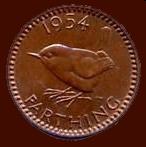








Designed by Nigel G Wilcox






The Paragon Of Metal Detecting
Powered By Sispro1
British Sterling Currency - Numismatics,
Penny
For Reference ONLY
Everything For The Detectorist
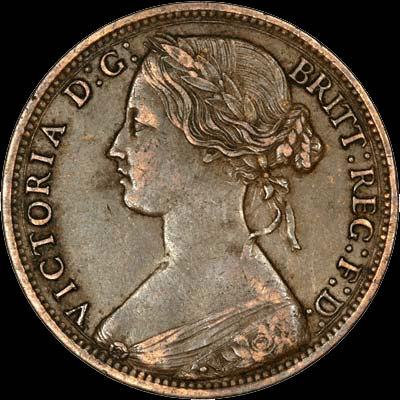
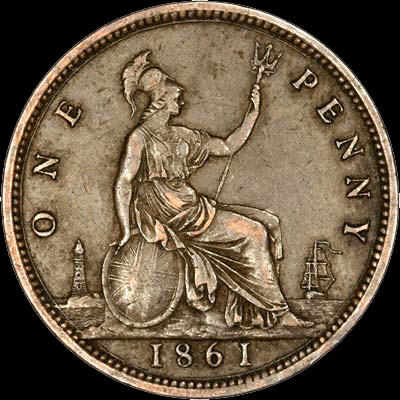
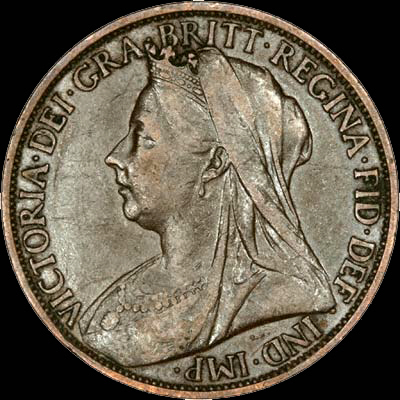
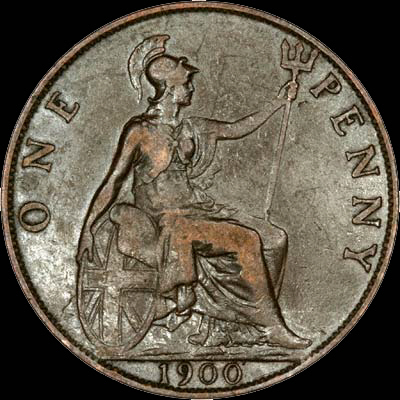
Victoria 1837-1901 AD Copper & Later Bronze Penny
Young head copper pennies were issued for Queen Victoria from 1839 to 1860 inclusive, before the change to smaller and lighter bronze pennies.
The obverse design is similar for all dates, a youthful portrait of the queen, with her hair in a "bun", with two ribbons, facing left.
Colon Spacing
There are also varieties with different spacing between the lettering of the legend and the colons, and some with missing colons.
Comparison between Elizabeth II's and Victoria's pennies. The dark toning of the Victoria penny is normal for older circulated coins.
The penny of Queen Victoria (1837-1901) is one of the most intricate denominations of British coinage, with most of the varieties emerging after the switch from copper to bronze coinage in 1860.
Between 1839 and 1860, the penny was made of 18.8 grams of copper and was 34 millimetres in diameter. From 1860 onwards, bronze (an alloy of 95% copper , 4% tin , and 1% zinc ) was used instead - the bronze penny weighed ? oz (9.4 grams) and was 31 millimetres in diameter. This article can only mention the gross differences between different varieties of penny, but a very great number of small differences appeared, especially between 1860 and 1883.
Just three portraits of the Queen were used on the penny in the whole of her reign, the Young Head (used from 1838 to 1859, with rare copper issues from 1860 - the 60 is struck over 59), designed by William Wyon (who died in 1851), whose eldest son Leonard Charles Wyon (1826-91) designed the bronze coinage of 1860 with the second ("bun") head (1860-1894 with scarce issues of the farthing in 1895), and finally the Old Head (or "veiled head") designed by Thomas Brock which was used on the penny from 1895 to 1901. Unlike the silver coinage, the Jubilee Head was not used on the bronze coins.
The first obverse showed the Young Head of the Queen, facing left, with the inscription VICTORIA DEI GRATIA with the date beneath the head; this obverse was used (with a slight alteration in 1858) until the end of the copper penny issue in 1860. Copper pennies were issued for all years between 1839 and 1860 except 1840, 1842, 1850, and 1852. The reverse of the coin for the whole of this period was similar to the William IV issue, with a seated right-facing Britannia holding a trident, except that most years the head of the trident was ornamented; the inscription read BRITANNIAR REG FID DEF.
The bronze coinage of 1860 for the first time stated the value of the coin on the reverse. The obverse was mostly unchanged between 1860 and 1894 except for some variations in the border (during 1860 only when it was either toothed or beaded), and whether or not there was an "L.C. Wyon " between the bust and the rim. The inscription read VICTORIA D G BRITT REG F D. The reverse shows a seated Britannia holding a trident with the words ONE PENNY to either side of her, and the date in the exergue beneath her; until 1895 there was a lighthouse to Britannia's left and a ship to her right; variations in the reverse include different levels of the sea around her feet, and an "H" below the date in 1874, 1875 (very rare), 1876, 1881 and 1882 indicated that the coin was produced at Messrs Ralph Heaton's mint in Birmingham. Pennies were produced in all the years between 1860 and 1894.
For all years from 1895 to 1901 the "Old Head" bust was used, with the inscription VICTORIA DEI GRA BRITT REGINA FID DEF IND IMP, while the reverse was similar to before although the ship was no longer depicted. The first year (1895) had two varieties, one with Britannia holding a trident 1mm to the left of the letter 'P' in PENNY and the other depicting her holding the trident 2mm away from the P of 'PENNY' (this variety also has NO sea behind Britannia). The latter is quite rare. The 1897 penny also has two varieties, one of which has the tide level to Britannia's left as high and another, more common, as normal. 1901 pennies were kept back as keepsaves as the Queen died on 22 January that year.
Top of Page - First Images
Obverse
Young Head, Victoria facing left.
VICTORIA DEI GRATIA
1855
Reverse:
The reverse features Britannia, seated left, holding a trident.
The legend reads:-
BRITANNIAR REX FID DEF
Young head copper pennies were issued for Queen Victoria from 1839 to 1860 inclusive, before the change to smaller and lighter bronze pennies.
The obverse design is similar for all dates, a youthful portrait of the queen, with her hair in a "bun", with two ribbons, facing left.
Colon Spacing
There are also varieties with different spacing between the lettering of the legend and the colons, and some with missing colons.
Comparison between Elizabeth II's and Victoria's pennies. The dark toning of the Victoria penny is normal for older circulated coins.
The penny of Queen Victoria (1837-1901) is one of the most intricate denominations of British coinage, with most of the varieties emerging after the switch from copper to bronze coinage in 1860.
Between 1839 and 1860, the penny was made of 18.8 grams of copper and was 34 millimetres in diameter. From 1860 onwards, bronze (an alloy of 95% copper , 4% tin , and 1% zinc ) was used instead - the bronze penny weighed ? oz (9.4 grams) and was 31 millimetres in diameter. This article can only mention the gross differences between different varieties of penny, but a very great number of small differences appeared, especially between 1860 and 1883.
Just three portraits of the Queen were used on the penny in the whole of her reign, the Young Head (used from 1838 to 1859, with rare copper issues from 1860 - the 60 is struck over 59), designed by William Wyon (who died in 1851), whose eldest son Leonard Charles Wyon (1826-91) designed the bronze coinage of 1860 with the second ("bun") head (1860-1894 with scarce issues of the farthing in 1895), and finally the Old Head (or "veiled head") designed by Thomas Brock which was used on the penny from 1895 to 1901. Unlike the silver coinage, the Jubilee Head was not used on the bronze coins.
The first obverse showed the Young Head of the Queen, facing left, with the inscription VICTORIA DEI GRATIA with the date beneath the head; this obverse was used (with a slight alteration in 1858) until the end of the copper penny issue in 1860. Copper pennies were issued for all years between 1839 and 1860 except 1840, 1842, 1850, and 1852. The reverse of the coin for the whole of this period was similar to the William IV issue, with a seated right-facing Britannia holding a trident, except that most years the head of the trident was ornamented; the inscription read BRITANNIAR REG FID DEF.
The bronze coinage of 1860 for the first time stated the value of the coin on the reverse. The obverse was mostly unchanged between 1860 and 1894 except for some variations in the border (during 1860 only when it was either toothed or beaded), and whether or not there was an "L.C. Wyon " between the bust and the rim. The inscription read VICTORIA D G BRITT REG F D. The reverse shows a seated Britannia holding a trident with the words ONE PENNY to either side of her, and the date in the exergue beneath her; until 1895 there was a lighthouse to Britannia's left and a ship to her right; variations in the reverse include different levels of the sea around her feet, and an "H" below the date in 1874, 1875 (very rare), 1876, 1881 and 1882 indicated that the coin was produced at Messrs Ralph Heaton's mint in Birmingham. Pennies were produced in all the years between 1860 and 1894.
For all years from 1895 to 1901 the "Old Head" bust was used, with the inscription VICTORIA DEI GRA BRITT REGINA FID DEF IND IMP, while the reverse was similar to before although the ship was no longer depicted. The first year (1895) had two varieties, one with Britannia holding a trident 1mm to the left of the letter 'P' in PENNY and the other depicting her holding the trident 2mm away from the P of 'PENNY' (this variety also has NO sea behind Britannia). The latter is quite rare. The 1897 penny also has two varieties, one of which has the tide level to Britannia's left as high and another, more common, as normal. 1901 pennies were kept back as keepsaves as the Queen died on 22 January that year.
Top of Page - First Images
Obverse
Young Head, Victoria facing left.
VICTORIA DEI GRATIA
1855
Reverse:
The reverse features Britannia, seated left, holding a trident.
The legend reads:-
BRITANNIAR REX FID DEF
Royal Monarchy
Copyright © All Rights Reserved by Nigel G Wilcox · · E-Mail: ngwilcox100@gmail.com
INFORMATION - DATA
Pages
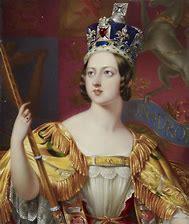
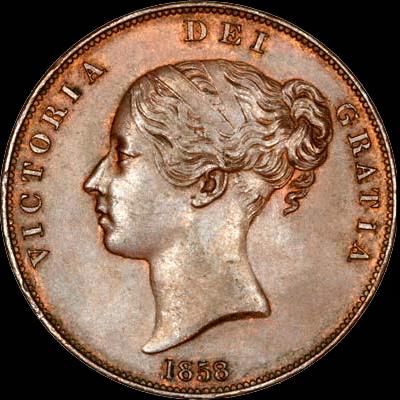
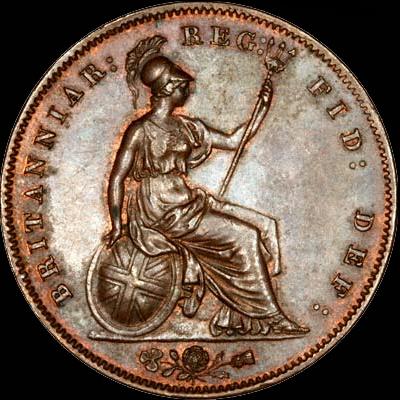
We do NOT buy or sell coins
Victoria
Penny
6. S. Menu
Main Coin Menu

VIEW ALL MENUS
Member NCMD
























